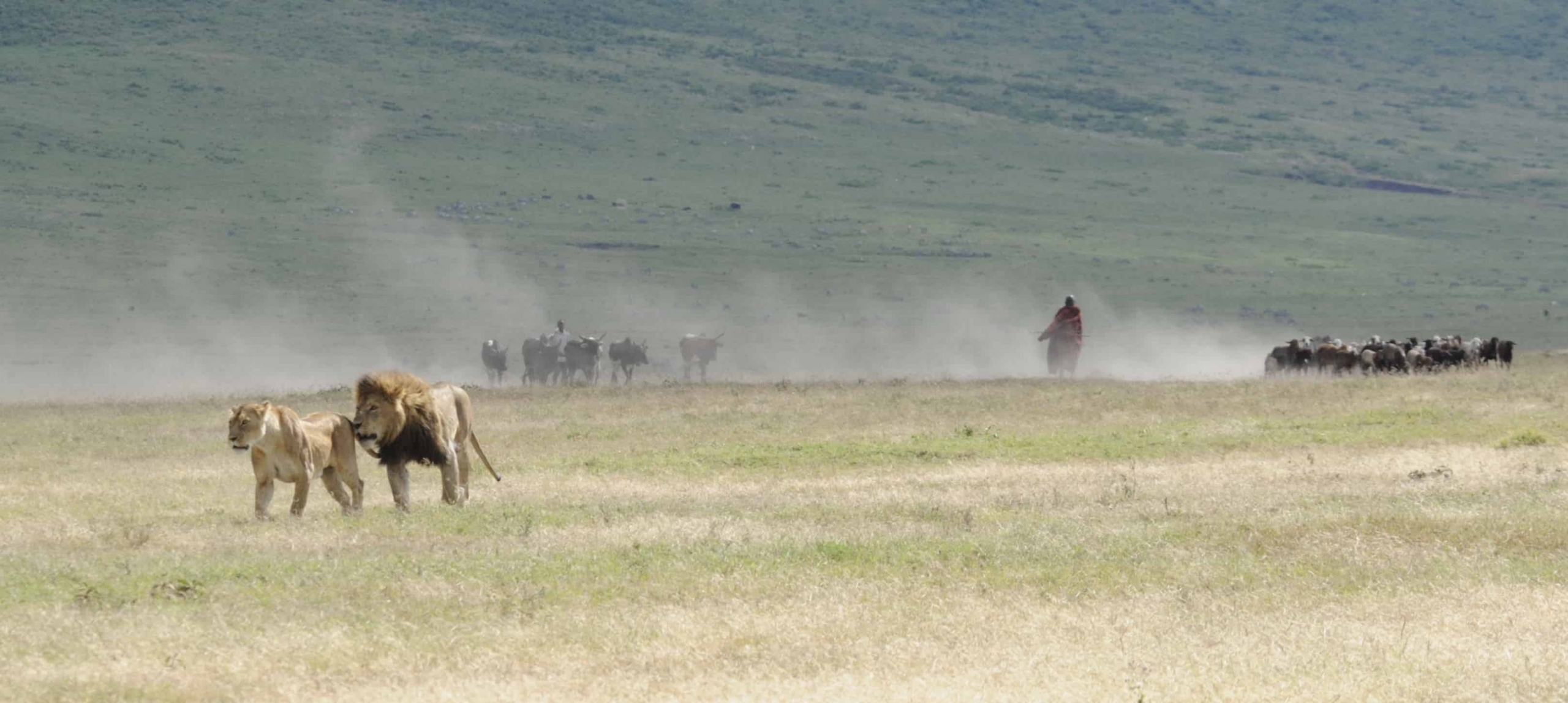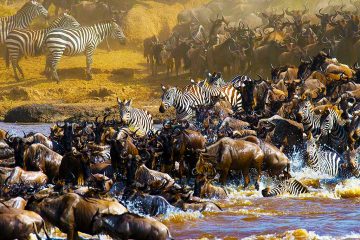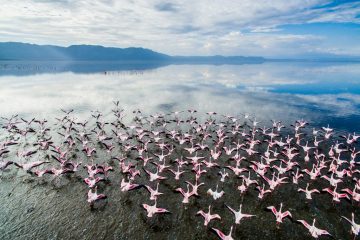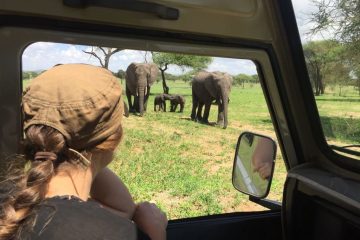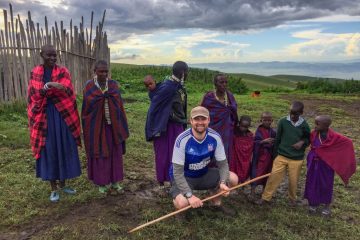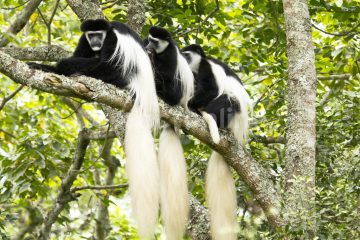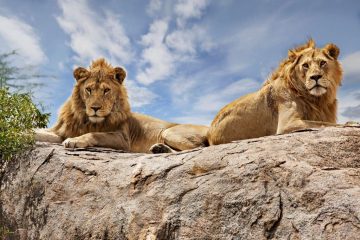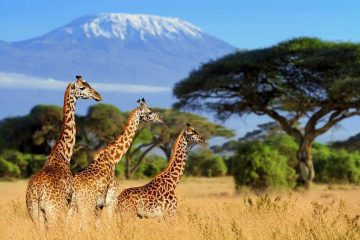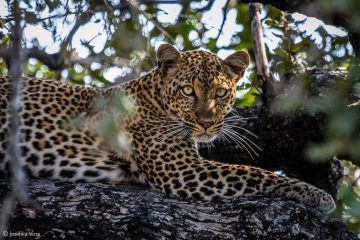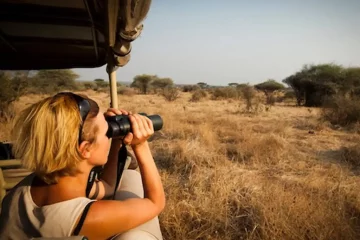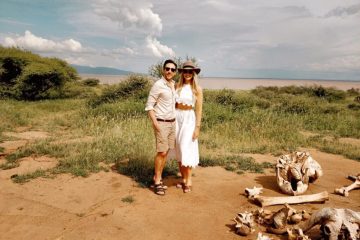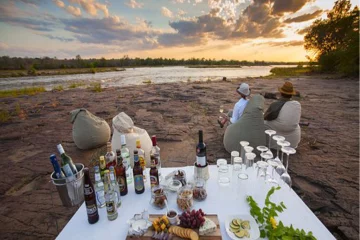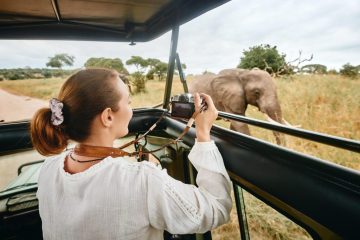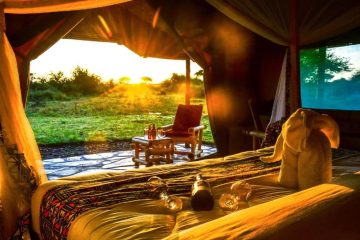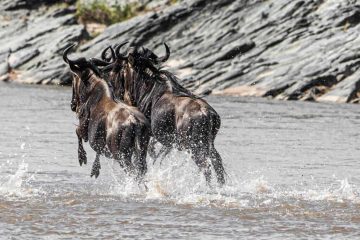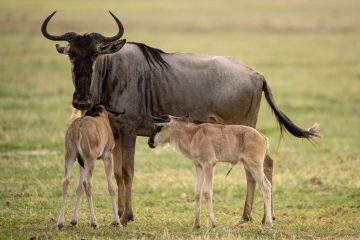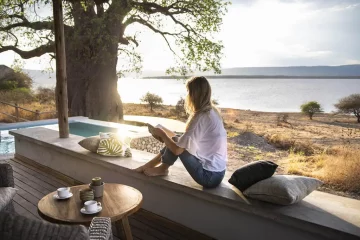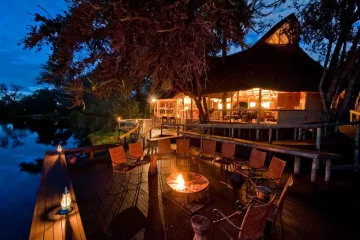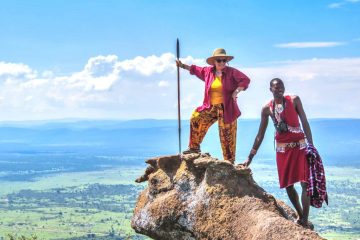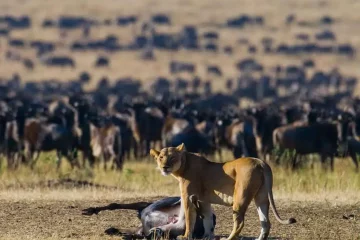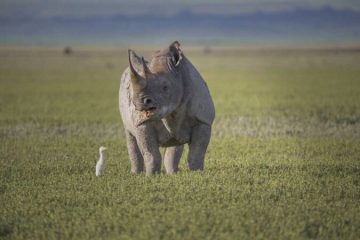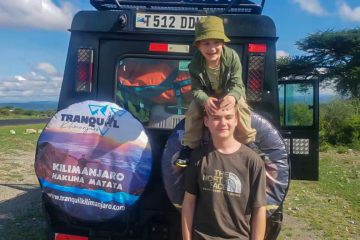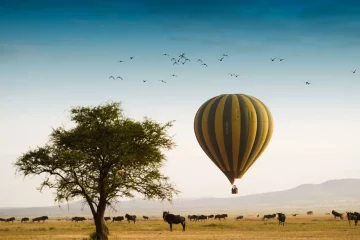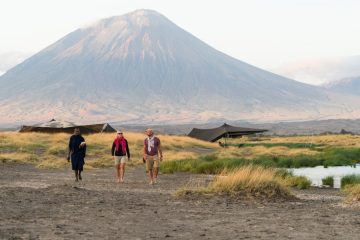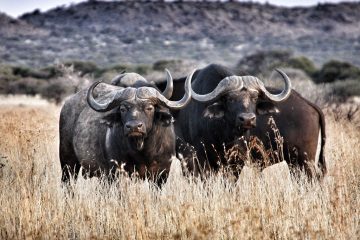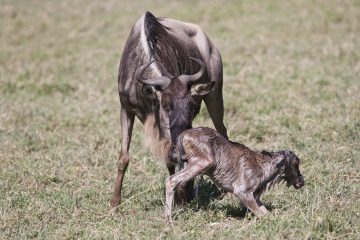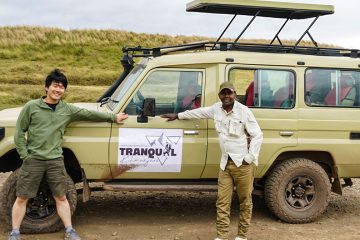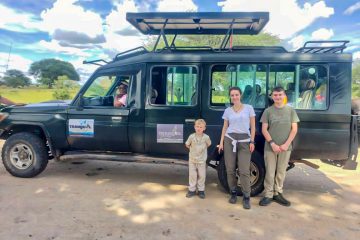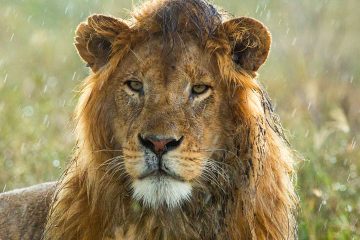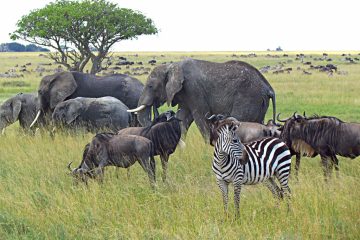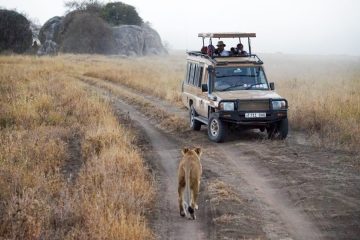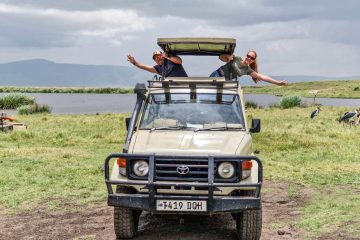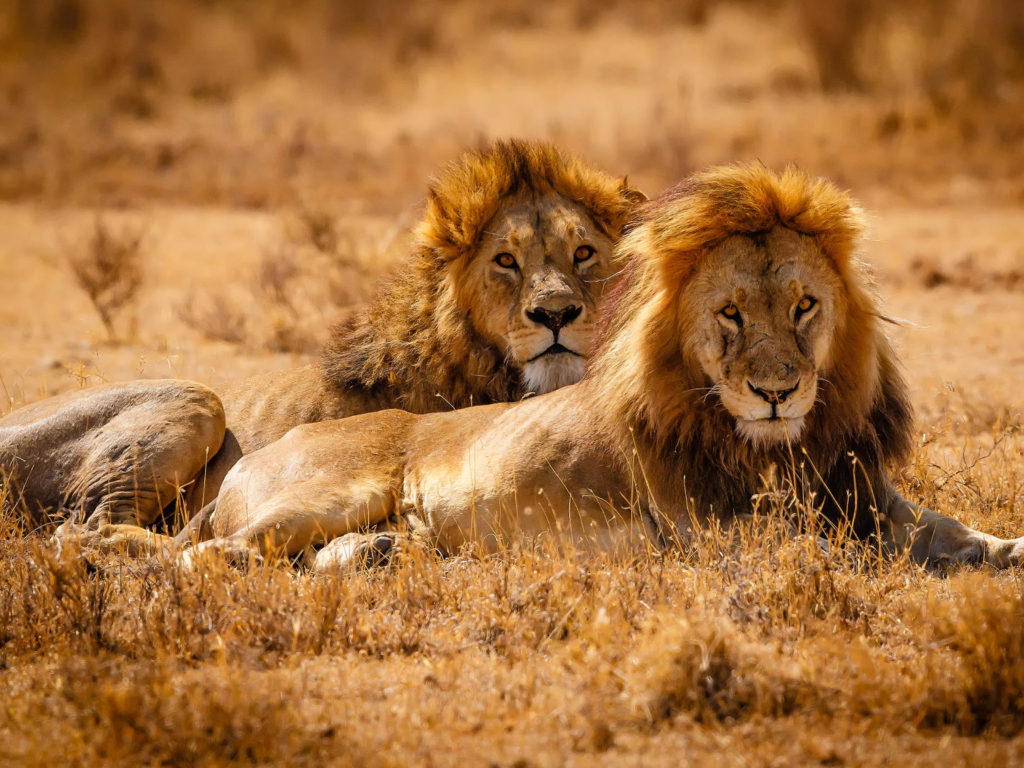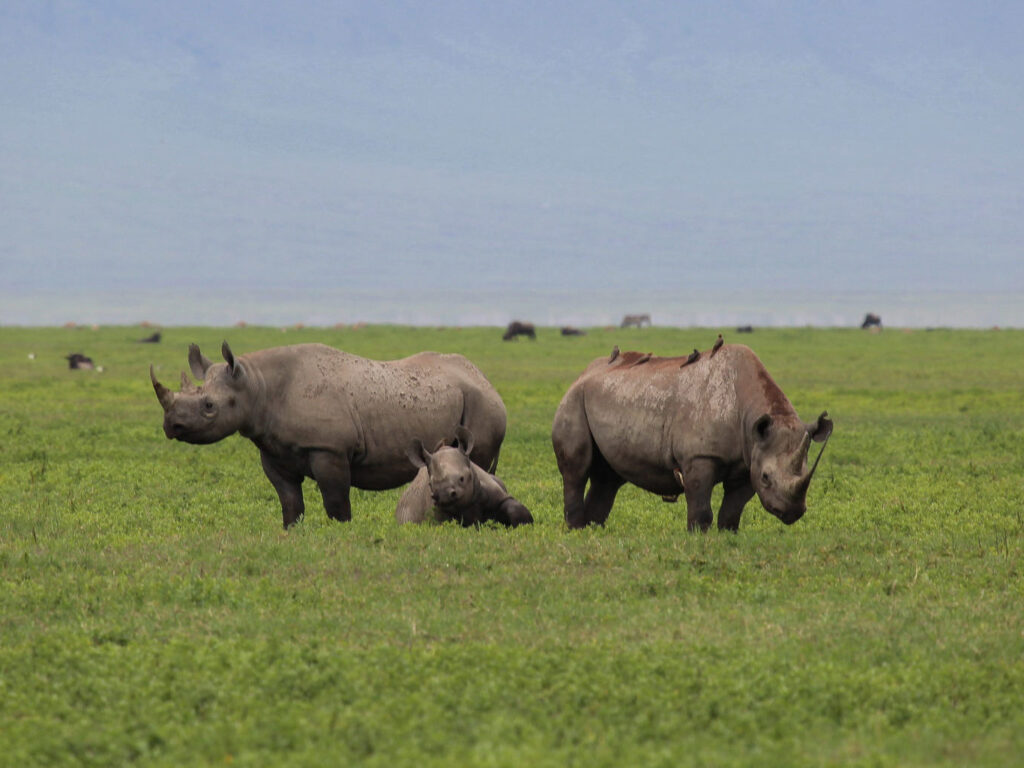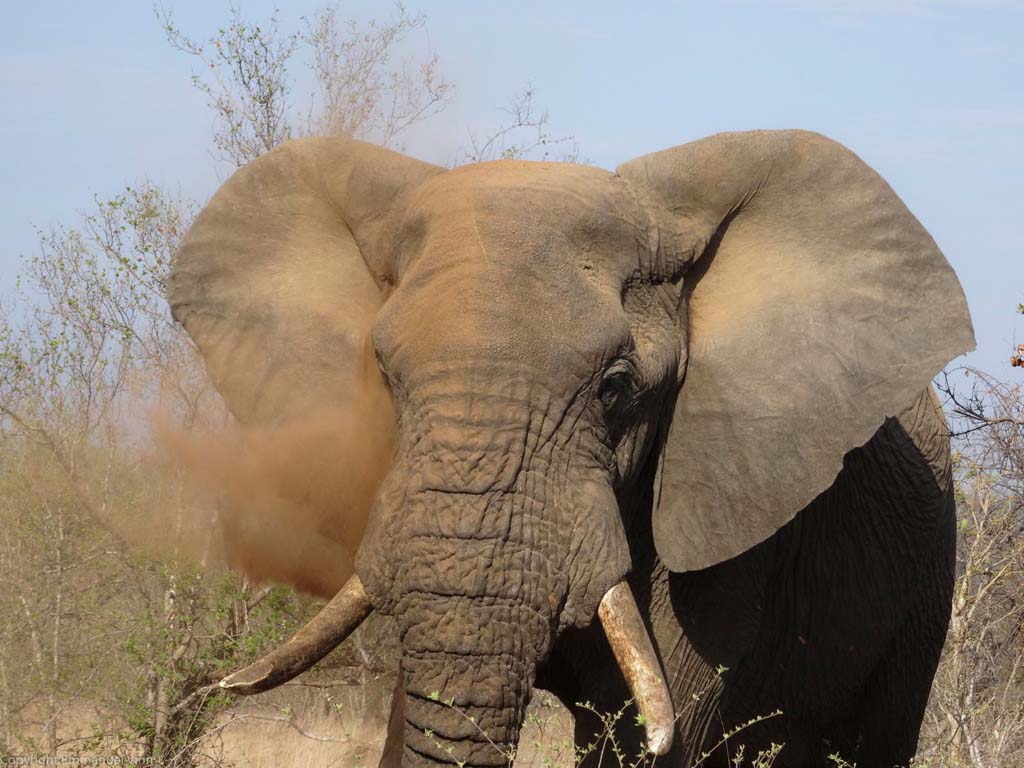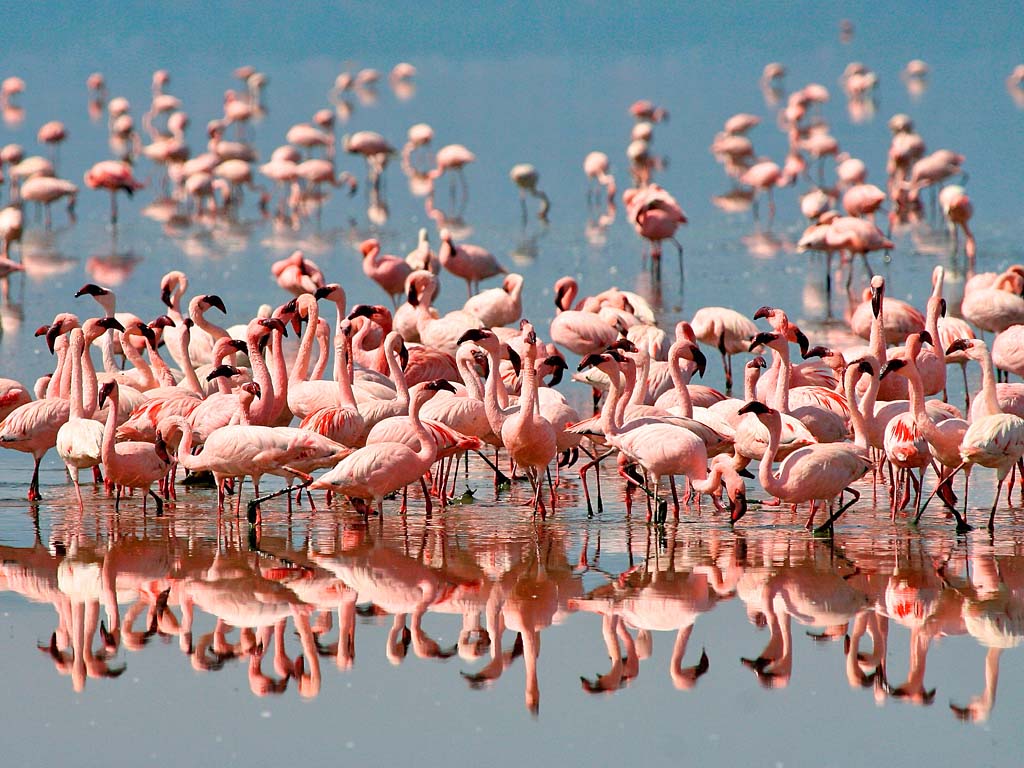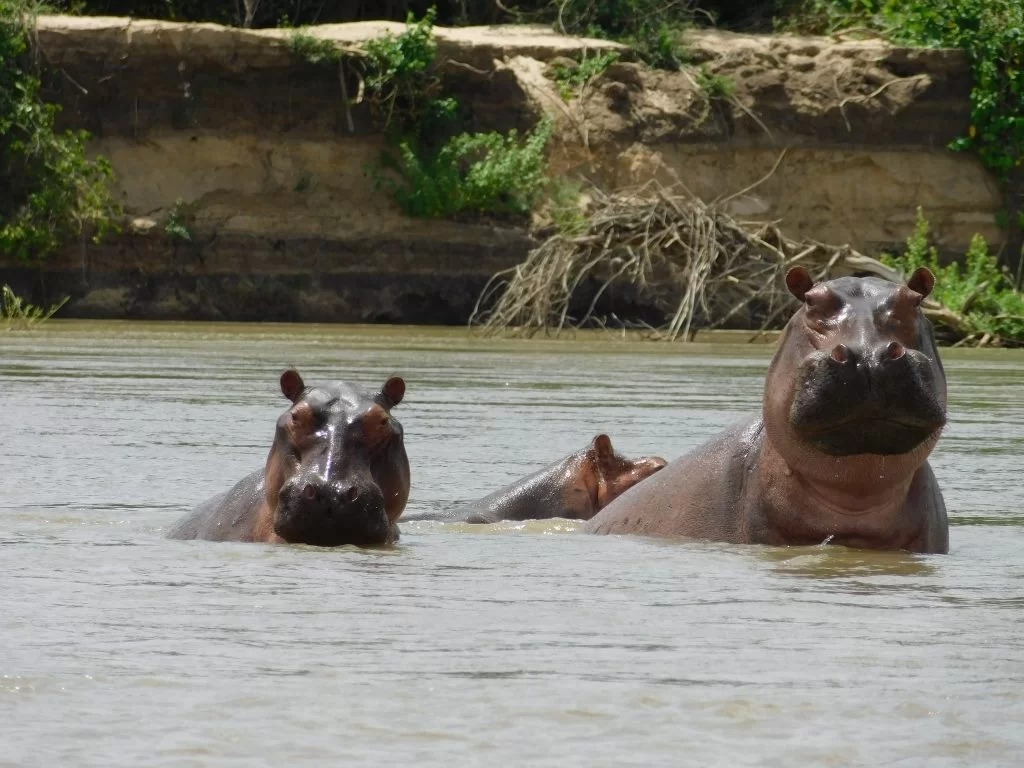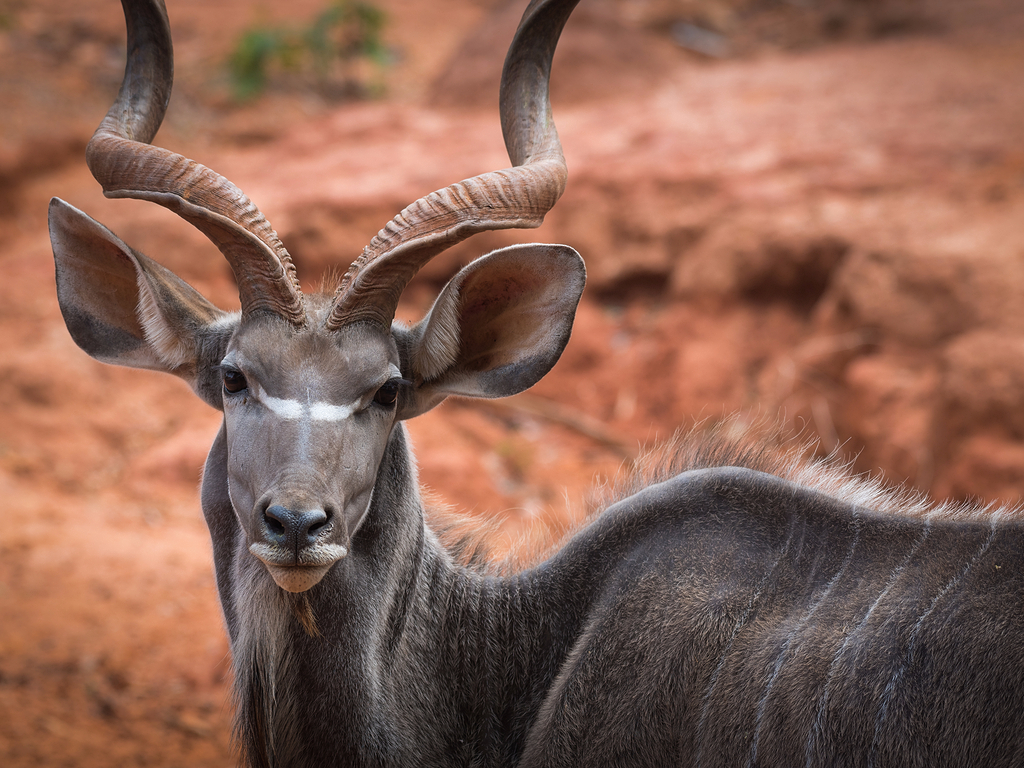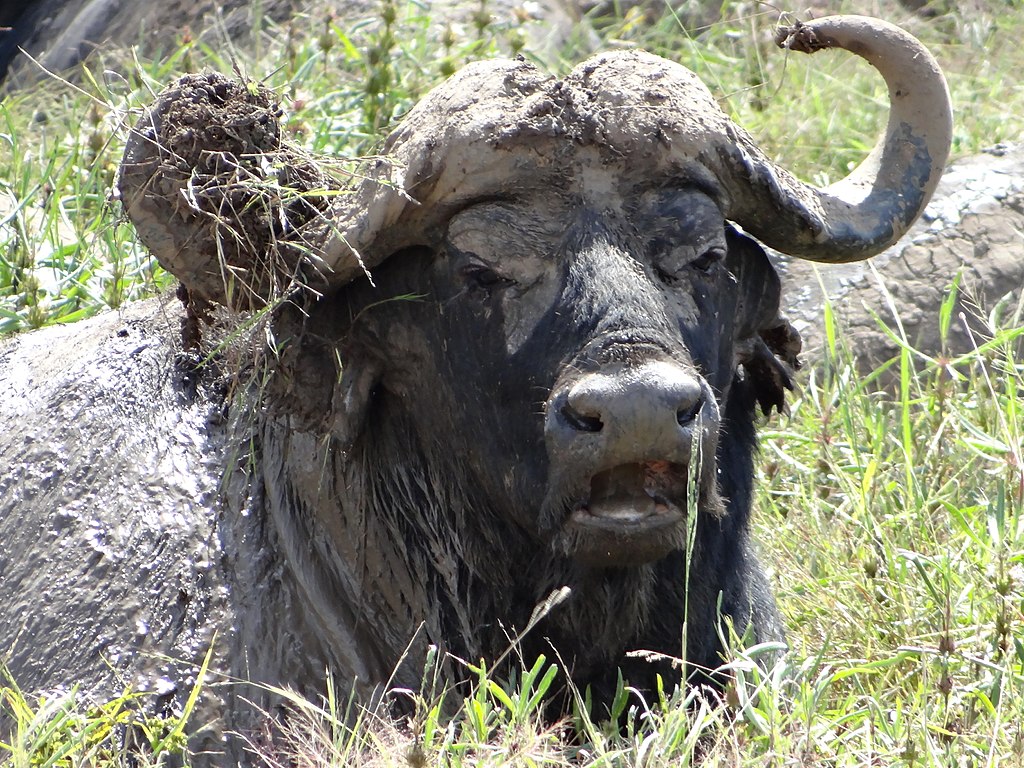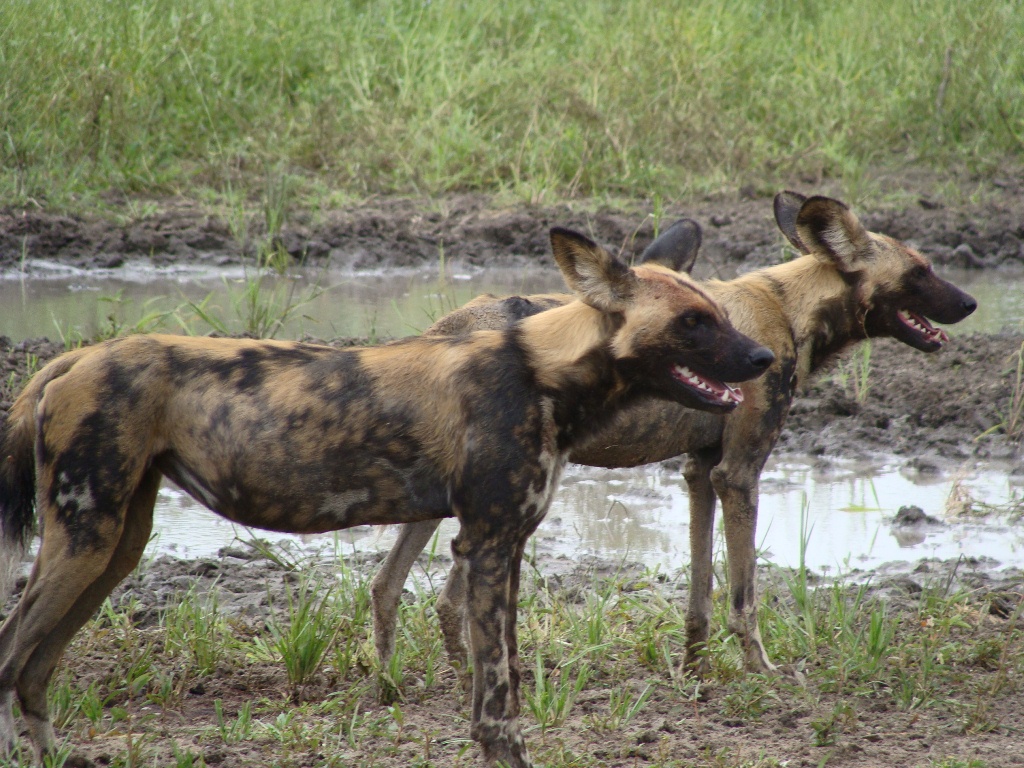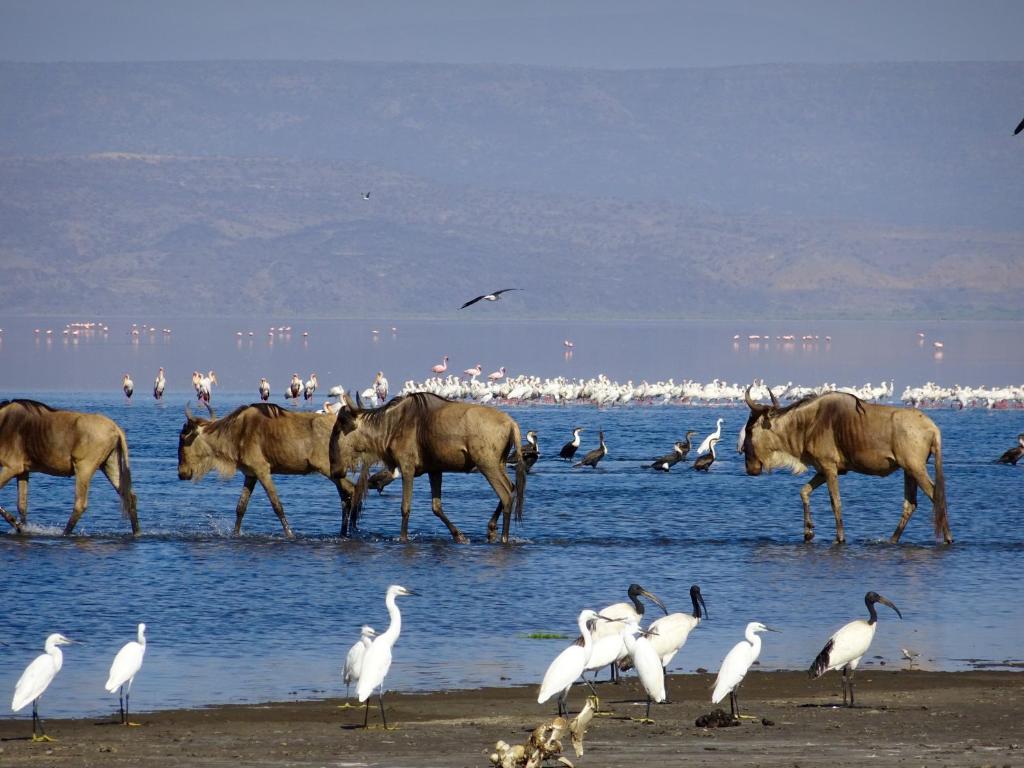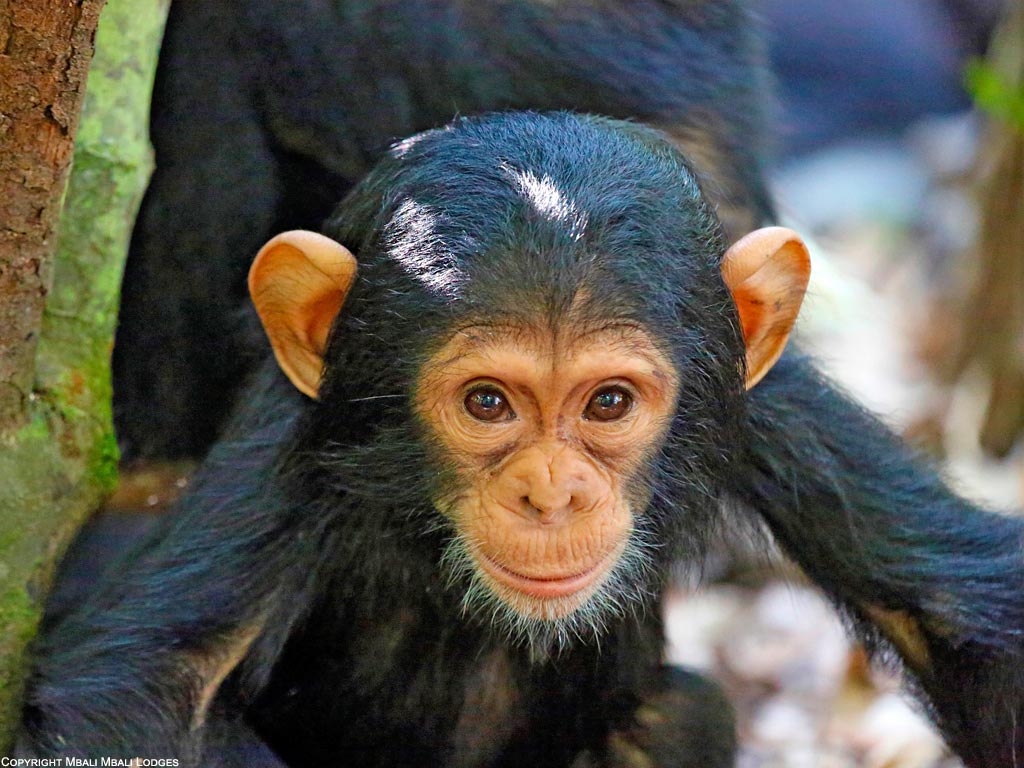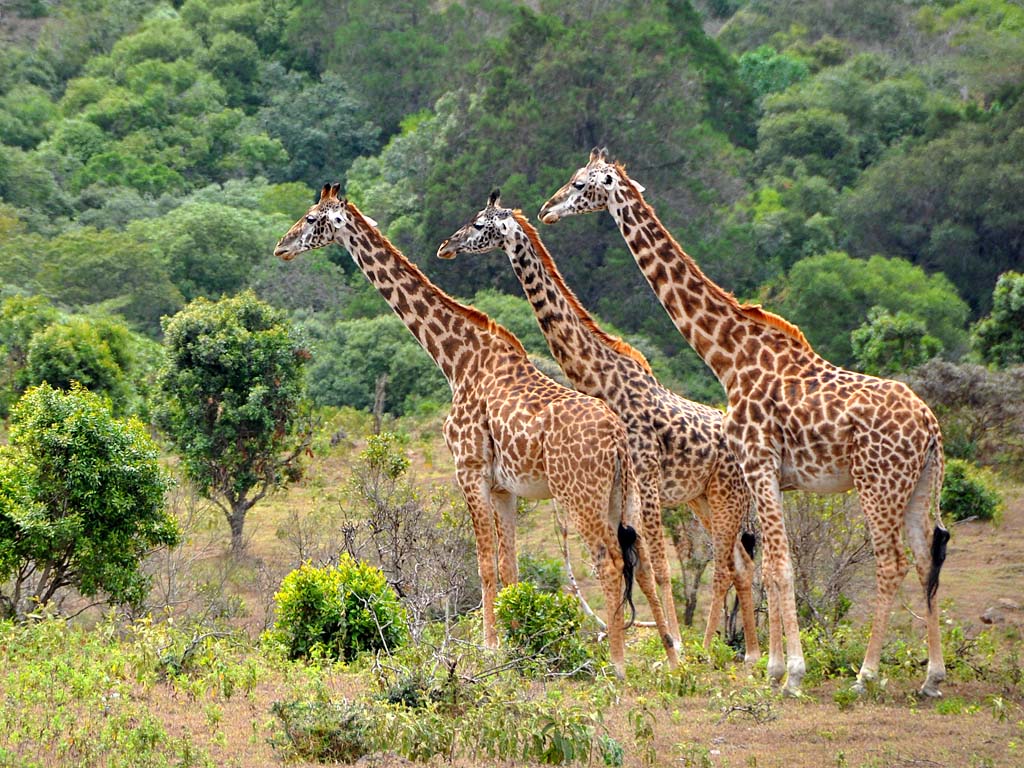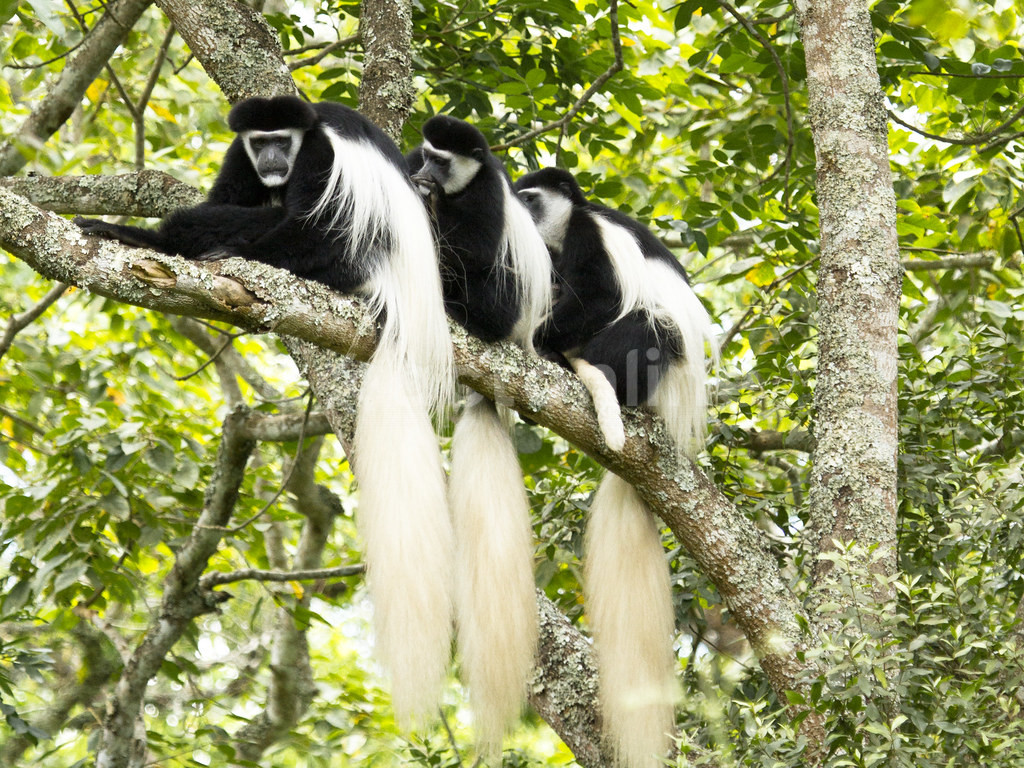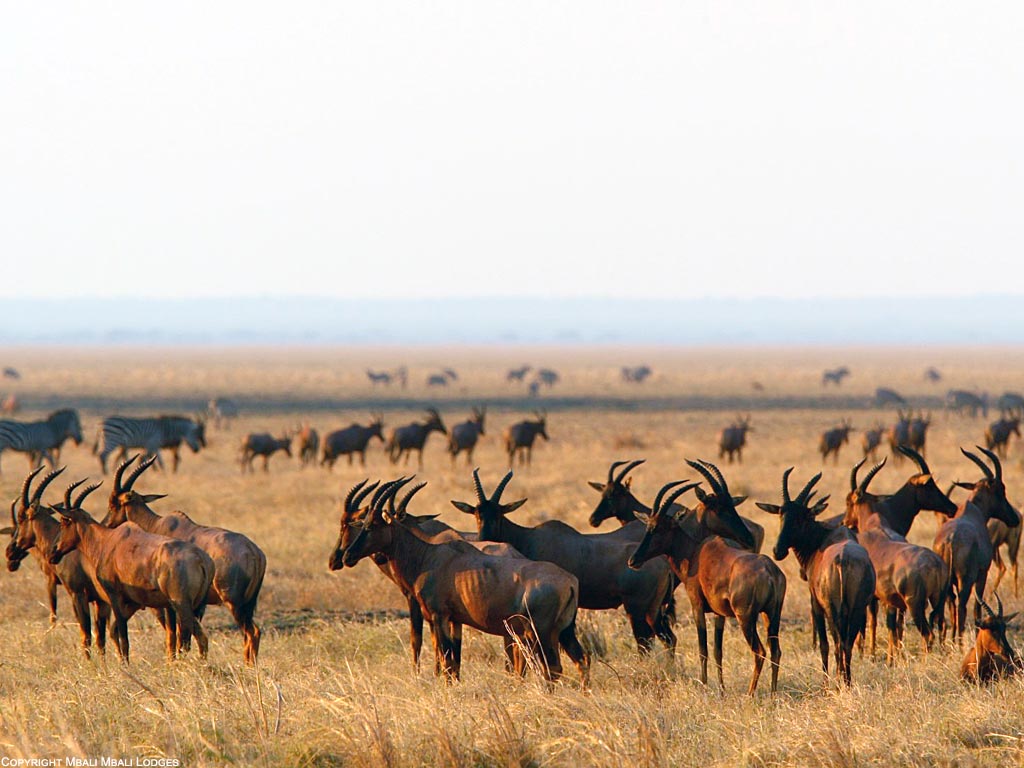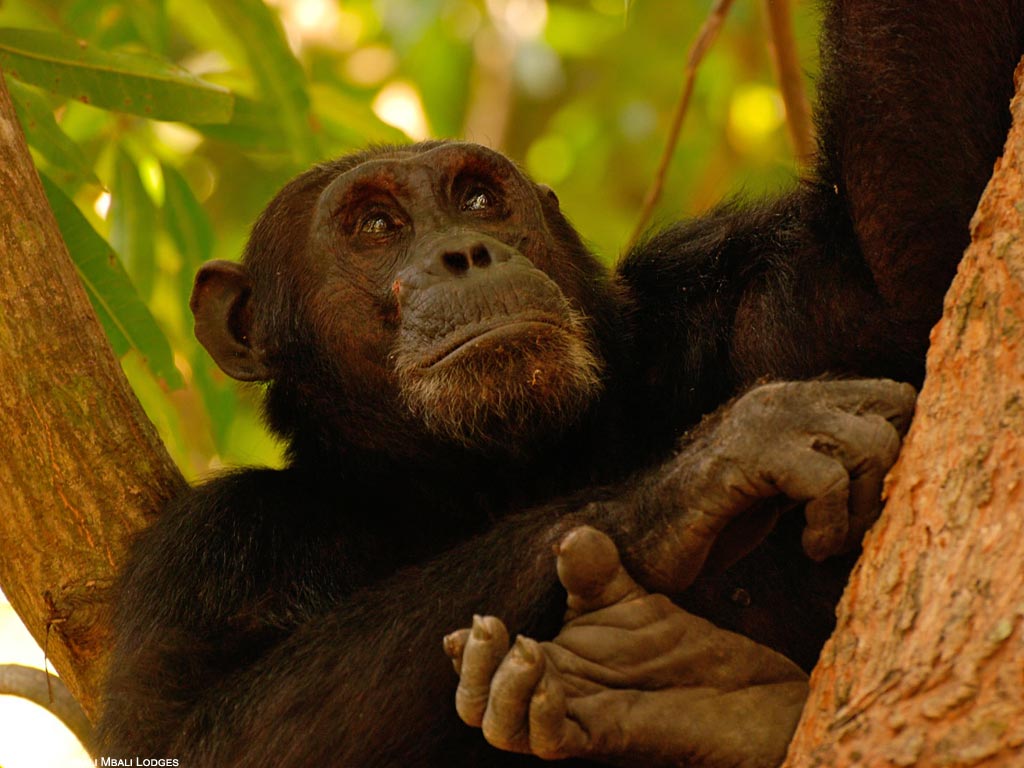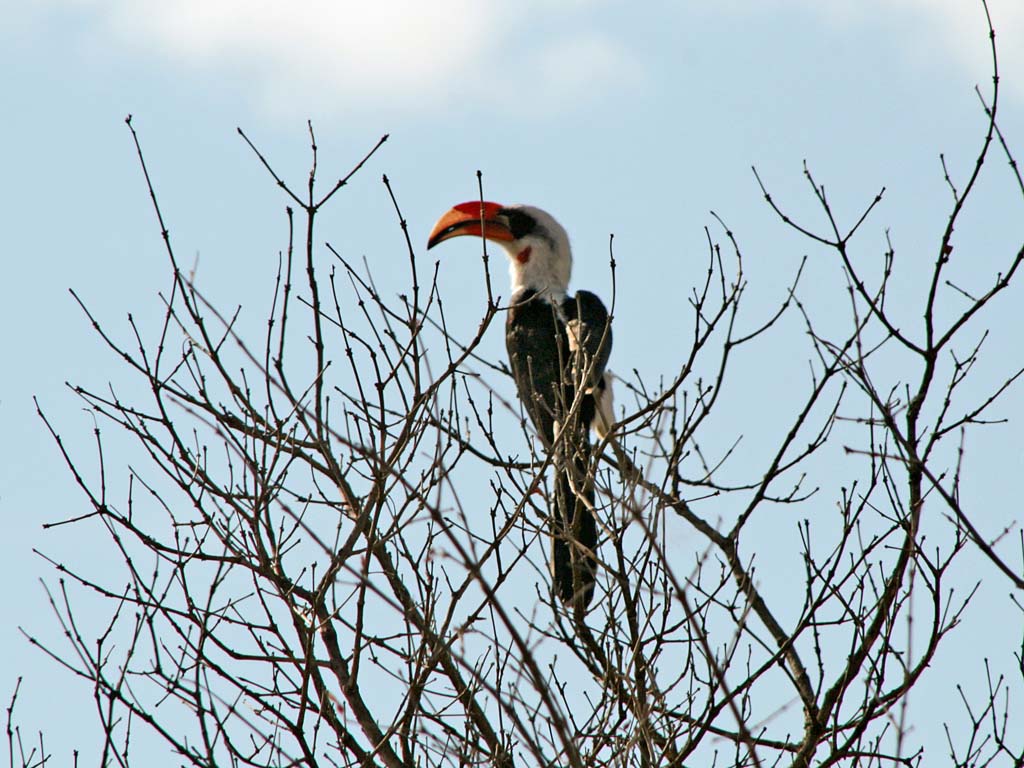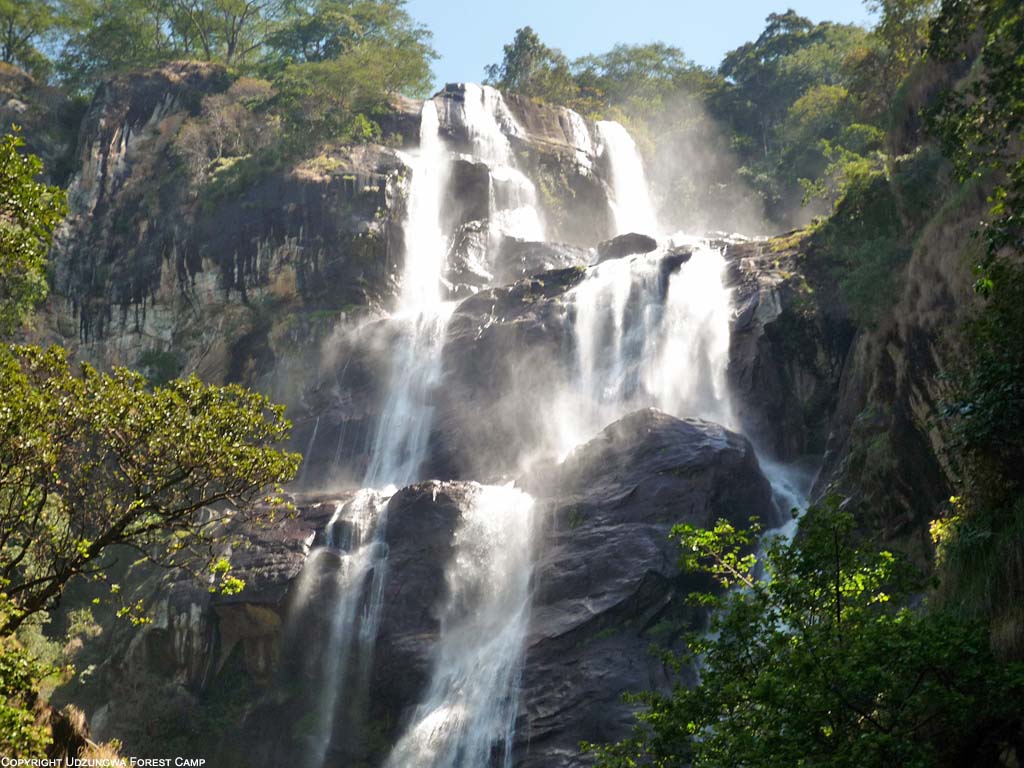Viewing the Ngorongoro wildlife in general
It can host a diverse range of fauna because of its wide plains, soda lake, and acacia woodland. It is renowned as ‘the garden of Eden’ and ‘the birthplace of life’ for a reason! As previously indicated, several prides of lion and leopard prowl the Crater floor, profiting from the inflow of wildebeest, Burchell’s zebra, and other game species into the region during the winter months. In fact, the Crater has the world’s greatest lion population!
Leopards, as previously clarified, like to spend their days on the rim and are frequently observed in the Lerai Forest. Although cheetah numbers are extremely low, the small population is frequently seen. Serval, caracal, and golden cats, on the other hand, are genuine rewards for big cat enthusiasts. The last two are quite rare, but serval is frequently observed on game drives.
The Crater is home to black rhino, Grant’s and Thomson’s gazelles, eland, topi, spotted hyena, hartebeest, jackal, black-faced vervet, baboon, and warthog, in addition to wildebeest and zebra! Hippopotamus, waterbuck, and a variety of other animals frequent the lake and its tributaries, while mountain reedbuck, Cape buffalo, and elephant inhabit the higher highlands.
Although the elephant population is not big, some of the oldest and largest tuskers have made their home here. It’s certainly worth keeping an eye out for these amazing beasts, especially now that their tusks are hitting the ground.
Ngorongoro Conservation Area Birdlife
The Crater’s birdlife is abundant, with over 200 species to keep birdwatchers occupied! The gathering of large numbers of common and dwarf flamingos in the Crater’s soda lake, eating on crustaceans and algae, is an especially beautiful sight. Raptors such as the marsh harrier, augur buzzard, black kite, tawny eagle, and white-backed vulture may be seen in the region. Avocet, hoopoe, black-bellied bustard, cattle egret, ostrich, fan-tailed widow-bird, grey-rumped swallow, tiny grebe, red-billed firefinch, speckled pigeon, and wattled starling are among the other feathered beauties. Don’t forget to bring your binoculars!
The Ngorongoro Conservation Area’s History.
The Ngorongoro Conservation Area Ordinance, which includes Ngorongoro Crater, was passed in 1959 to safeguard the Conservation Area. The property was set aside for varied uses, and animals wandered the floor alongside the semi-nomadic Maasai farmers’ livestock. The Ordinance continues to preserve species today, with the Ngorongoro Conservation Area Authority in charge of conservation. Poaching prevention, invasive species monitoring, tourist management, and infrastructure control are among its interests.
The Ngorongoro Crater is merely a small section of the Ngorongoro Conservation Area, which encompasses a much broader ecosystem.
The Crater is undoubtedly the main draw, but the Conservation Area also includes off-the-beaten-path destinations like Empakai Crater (a smaller, water-filled Ngorongoro) and the woodlands that lead to the active volcano of Oldoinyo Lengai (see our Lake Natron page for this remarkable area). Without a question, these distant locations are among Tanzania’s hidden beauties.
Best time to visit Ngorongoro for wildlife viewing?
You can expect a spectacular spectacle at any time of year due to the large concentrations of a variety of species. Because the animals do not leave the Crater floor, you may go on fantastic game drives at any time of year.
The main issue with Ngorongoro is how crowded it can get, which has a negative impact on the quality of wildlife watching available. July and August, as well as Christmas and part of February, are extremely busy months. The fact of Ngorongoro, however, is that wildlife watching should be considered a bonus; the sheer magnificence of being on safari in an extinct volcano should be your primary motivation for visiting.
How much does it cost to visit the Ngorongoro Crater?
Because of the recent increase in park fees, Ngorongoro is now Africa’s most costly safari location.
The cost of driving a car into the Ngorongoro’s floor is $300, while the park fee is $60 – and this is before you pay for your night’s lodging! To summarize, this is not a cheap safari destination – far from it. Travel in November, as well as April and May, and the Ngorongoro Conservation Area’s usual low season rates apply to all properties. This is the cheapest time of year to visit the park.
The Ngorongoro Crater’s Safaris
Game drives are the only activities available in the Ngorongoro Crater. It is not possible to go on a walking safari or a night safari.
The Crater floor has picnic sites, but the major activity is daylight game drive. There are a few resorts on the rim of the Crater that provide short treks, but you’ll need to go farther into the Ngorongoro Conservation Area to locate genuine walking areas or communities to visit.
Accommodations off the rim of the Crater (particularly in adjacent Karatu) can provide a much greater range of activities. The town of Mto wa Mbu, where Maasai settlements are available for visitation, walking grounds are boundless, and there is a true bustle of tribal life, is accessible to lodges.
Game drives in Lake Manyara or up and down the Great Rift Valley are available from the homes in this area. Some of these places offer horseback riding.
What are the best lodges to stay in the Ngorongoro Crater?
In terms of lodging in this location, you have two choices. You have the option of staying on the rim of the Crater or in one of the boutique homes in the surrounding hills. The majority of camping on the Crater Rim is not recommended in general. The majority of these establishments are large business hotels with up to a hundred rooms. There are a few exceptions: the wonderful &Beyond Crater Lodge and Lemala Ngorongoro Crater Camp are both excellent tented alternatives.
The highlands are where we would recommend staying, and there are a variety of excellent boutique homes to choose from. Rhotia Valley and Plantation Lodge are both inexpensive, whereas Gibb’s Farm and The Manor are slightly more expensive.
Ngorongoro Crater Travel Tips
Unless you can afford Crater Lodge, stay away from the Crater rim! The nearby town of Karatu is approximately an hour away and has lodges that are far more attractive and cheap than those on the Crater rim.
Although the Ngorongoro Crater is not a zoo, it may get rather crowded. You will not be the only one visiting Ngorongoro, as is the case with many of the world’s most beautiful sites!
There’s no disputing that the safari at the Ngorongoro isn’t as real as it might be – there are just too many guests – but remember that all of the animals are there of their own free choice, and you’re on safari in an extinct volcano! This is a wonderful safari spot that can’t be found anywhere else in Africa.
Make the most of your stay in Ngorongoro by visiting at different times of the day. If you can get to the Crater floor first, it’s a once-in-a-lifetime event – but if you’re 30 minutes late, it’ll be a nightmare.

